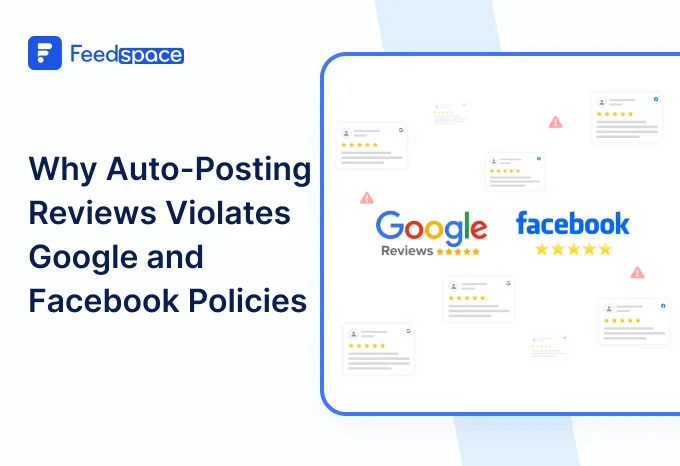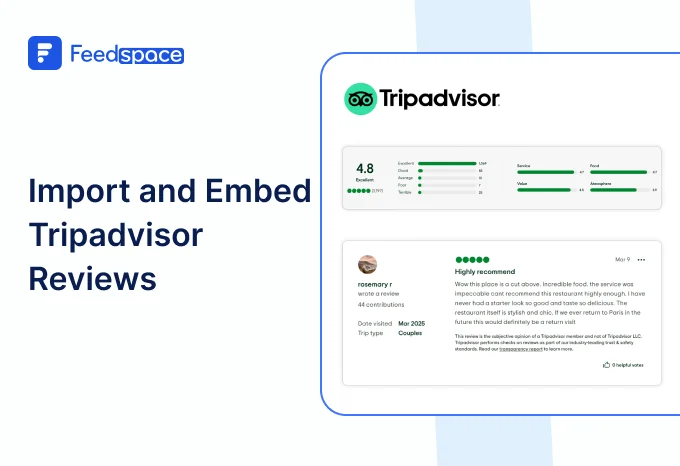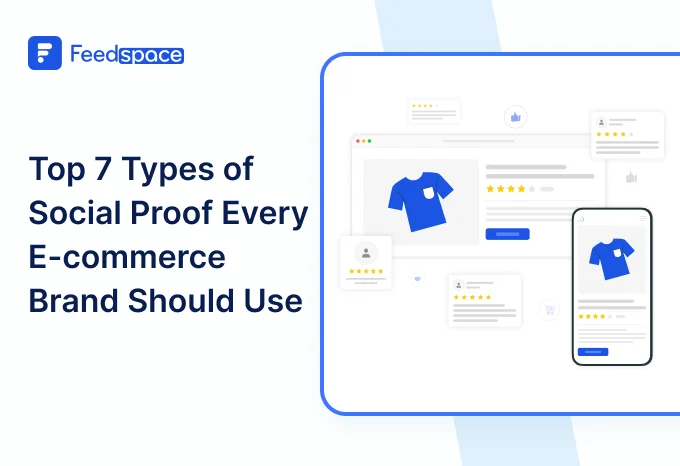Collect user feedback through various channels such as surveys, feedback forms on our website, social media platforms, and direct communication with users via email or support tickets. This feedback is carefully reviewed and analyzed to understand users’ experiences, preferences, and suggestions for improvement. We strive to address any concerns or suggestions raised by users to enhance their overall experience with our products or services.
Introduction
In our day and age, the customer is king. Customers’ expectations are on the rise due to advancements in consumer technology. They want ease, involvement, and consistency. So, user satisfaction and business growth now depend heavily on user feedback.
Accordingly, businesses are asking their customers directly for their opinions. Many ways exist to collect and analyze customer feedback. These strategies vary depending on your organization’s goals, the digital channels you use (such as email, mobile, and website feedback), and how you respond to the feedback you receive.
The theory behind feedback is that our users set the standards you will follow all along the way. Let us decode it here so you can proceed with ease on your business path.
What is User Feedback?
User feedback is any information that you receive from your users on how your business, products, or services have benefited them.
It is a combination of quantitative data and qualitative insights acquired from real users about their preferences, dislikes, impressions, and needs for a product. To develop new products or enhance current ones by customer wants, gathering and analyzing users’ feedback is essential.
Customer feedback data is a beneficial tool for identifying barriers that your customers encounter. There’s no better way to learn what people think of your business than to ask them directly.
Types of User Feedback
Do you want to know how well your email marketing is performing? Or would you instead learn more about your website’s general user experience? Businesses can use a variety of user feedback survey formats to gain insights into their user base. Here are some different types of user feedback that you can refer.
Customer Experience Feedback
Loyalty Feedback
Email Campaign Feedback
Mobile App Feedback
Website Content Feedback
User Experience Feedback
Why is User Feedback Important?
Customer feedback first highlights areas where your product or service needs improvement.
Customers are more likely to return to your business when you take care of their needs. That’s because it makes them feel valued and involved. Making them feel valued also fosters loyalty.
Why Should You Collect User Feedback?
1.Customer-Centric Approach
User feedback puts your users at the center of all your strategies. It assists businesses in understanding their target audience. Moreover, businesses can understand their users’ pain points. And so, businesses can make products tailored to user expectations.
2.Boosts Product Improvement
Making a product and releasing it is the beginning. A business can improve a product for its customers by incorporating constructive feedback. Customer feedback leads to revisions and transformations to the product. Furthermore, feedback supports prioritizing changes, fixing bugs, and feature additions. This way, it takes the guesswork out of creating or improving products.
3.Enhanced User Experience
Practicing active listening to users’ opinions helps optimize the user experience. Further, adapting feedback makes the product intuitive. And the more easy and enjoyable the process is, the more user retention.
4.Encourages Innovation
Feedback has two roles here. The first is to help in idea generation. Users can contribute by suggesting useful features and changes. And the second is streamlining the innovation process. The development team will have several ideas on their plate. But it is impossible to execute them at once. But, that’s where feedback helps a business in prioritizing innovation. Furthermore, regular feedback provides a foundation for refining brand messaging and more.
5.Builds Brand Loyalty and Trust
For a successful business, long-lasting user relationships are crucial. And for that, trust is essential. When users see that businesses value and act on their feedback, it fosters trust. This means consumer feedback is the key to happy customers. And happy customers become the biggest brand advocates promoting organic growth.
6.Present your Case with Actual Data
Customer feedback provides you with facts to support your improvements. This makes it easier to advocate for changes.

7.Leverage Negative Feedback
A primary benefit of product feedback is reducing churn. And you can lose it if you only consider the opinions of satisfied customers. It is important to use even unfavorable comments to enhance services. Pay attention to disappointed customers. Find out what steps you can take to ensure that no one else has to deal with the same problem.
When to Collect User Feedback?
There are two perspectives to approach this question. The user journey and the product life-cycle standpoint.
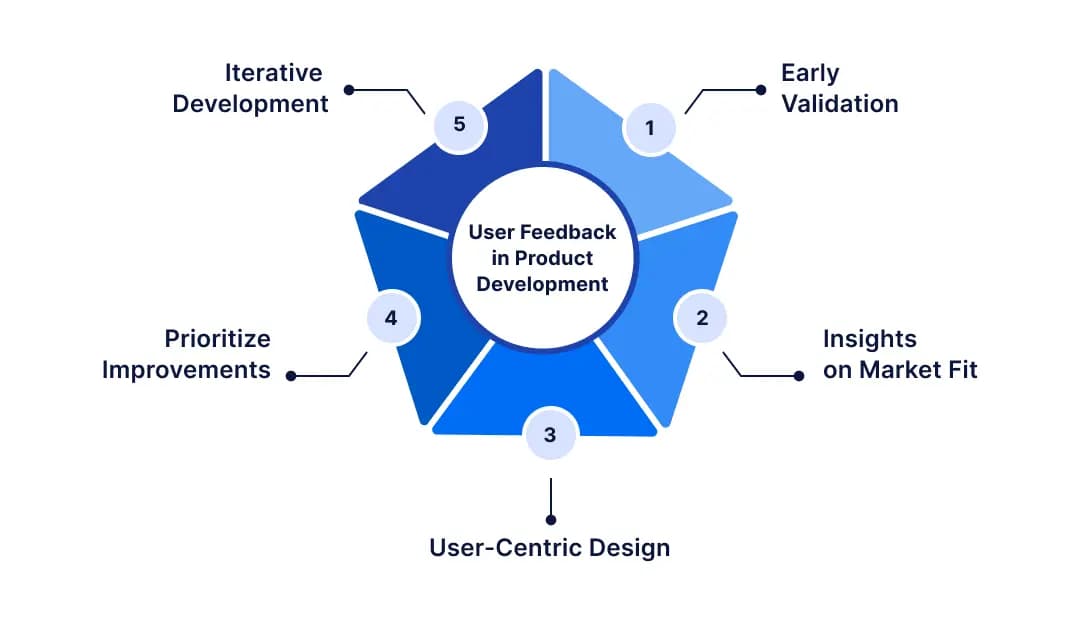
Ask questions at the following stages.
- Ideation: Refine your ideas based on users’ opinions.
- MVP: Prioritize feature additions based on feedback.
- Validation: Use feedback data to validate market fit.
- Iteration: Keep improving the product based on user’s needs.
Besides, one of the best ways to determine when to request feedback is through trigger behaviors. Here are a few well-known instances of triggers that call for questioning:
- Duration: Depending on the kind of content offered on a given page, time spent on it may indicate engagement or uncertainty. Consider asking questions like- “Did you find everything you were looking for on this page?” or “Did anything surprise you?” or “What caught your attention?” This will let you know how interested this specific visitor is in your website.
- Exit Intent: Actions that indicate a visitor is ready to leave your website, such as scrolling toward the exit button, result in these queries. These inquiries can be about customer satisfaction, or if they need assistance
- Recurring visitor: Asking feedback queries to a returning user is a good idea because it shows that they were a high-intent visitor. If they did not make a purchase on their first visit, you can ask the reason behind it. If they have purchased, ask them why they wanted to come back. This can give you can idea about what is working for your business.
When asking for feedback, choose a natural moment in their user journey. Make sure that it doesn’t interfere with meaningful tasks. While it’s critical to know when to request consumer feedback, it’s as necessary to know when not to.
When Not to Ask for Feedback?
- For instance, by asking a user for feedback on the purchase page, you don’t want to prevent a high-intent user from converting or buying. This also holds for other conversion acts, such as subscribing to newsletters. If you make this blunder, it will restrain your business objectives.
- Furthermore, you should avoid asking first-time visitors for feedback. It can be disruptive to ask too soon because you won’t know much about them at this stage.
Having discussed the fundamentals of user feedback, let’s move on to collection.
How to Collect User Feedback?
The following is a list of popular ways to get user feedback:

Conducting Surveys
Survey forms enable businesses to assess user experience and identify areas of concern. In-app surveys are efficient in getting customer feedback throughout the improvement phase. These let customers inform the business of what is and isn’t working for them at different times.
New users should receive a survey three to four months after using the product. This provides them with enough time to form an opinion about the product.
Divide the responses of loyal customers into categories to make the data useful. Moreover, you can give loyal customers a survey every six months or a month after new releases. It’s also vital to get feedback from users when they stop using the product.
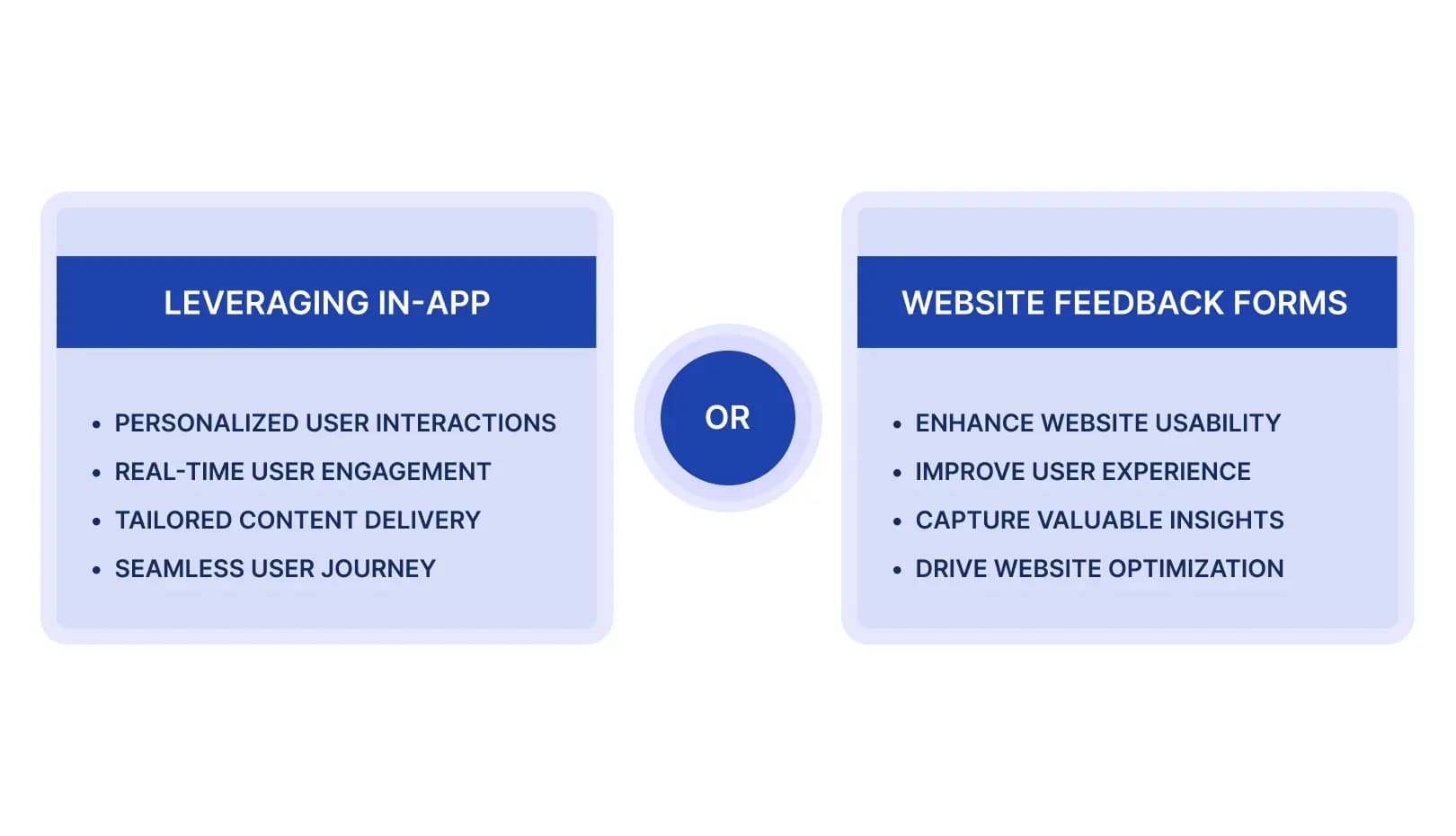
Leveraging In-app or Website Feedback Forms
You can opt to collect feedback after a specific action. It can provide fresh and to-the-point data related to a specific point in the user journey. This type of feedback helps a business perfect user experience, one part at a time.
Using Interviews and Focus Groups
This feedback is beneficial if your goal is to understand your target market. You’ll learn more about the subject of your inquiry from this type of feedback. Furthermore, you can get nonverbal clues, extra information, and more. Also, it is easier to understand complex development areas with focus groups and interviews.
Incorporating Social media listening
You can track social media channels to understand what people say about your brand. Social media listening tools help track user sentiments and feedback on public forums.
Leveraging User Feedback Tools
Using growth-boosting platforms like Feedspace in your marketing stack can assist you in gathering a variety of feedback. Feedspace allows you to gather audio testimonial, video testimonial, and text reviews. Additionally, using its social media review feature, you may import and embed user reviews from Google and product hunt. Sign up and try it out now.
Use website analytics
It gives you data-driven responses to user needs. You can examine data such as user behavior, navigation patterns, conversion rates, and more. It also offers a better experience and boosts traffic and engagement.
6 Tips to Make User Feedback Collection Effective
It is easy to get lost in user reviews. But if you manage it right, it’s also easy to take definite actions that make your business profitable. Let your users know you respect their opinions to make them feel valued. Tell them you are willing to hear them by following these tips.
- Never hesitate to request feedback
- Incorporate the net promoter score
- Make meaningful groupings out of your consumer segments.
- Never fail to ask why a consumer is leaving.
- The loud voices should not mislead you.
- Always remember to observe and collect periodic customer feedback.
Final Words
Establishing the goal for gathering user feedback helps you ask specific questions. Make sure you understand the feedback campaign’s goal. Is the purpose to understand how well a particular feature works? Or is it to get a thorough grasp of what the users need?
User feedback is extremely essential for the long-term success of your digital channels and for building a devoted clientele!
Gaining a thorough understanding of your user’s behavior starts with gathering feedback. Feedback tools are effective methods to gather beneficial insights into user opinions. They help you with customer feedback management and analysis. Moreover, this makes acting on feedback easier.
Are you prepared to begin utilizing user feedback for your optimizations? Check out Feedspace.


